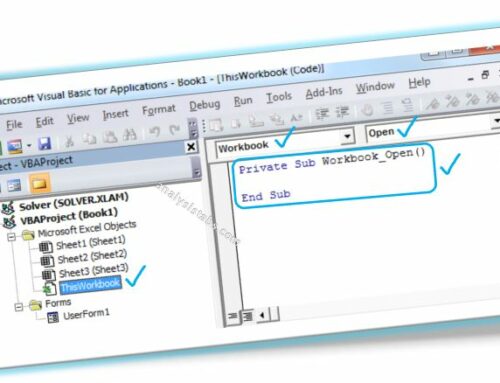VBA code to delete rows based on criteria example will help us to delete rows based on a condition from excel worksheet. We can use Delete method of Rows to delete the rows based on criteria. In this example we will see how to delete the rows in excel worksheet using VBA based on criteria. VBA code for deleting rows based on criteria macro should work for all the version of Microsoft Excel 2003, Excel 2007, Excel 2010, and Excel 2013.
VBA code to delete rows based on criteria
Here is the Example VBA syntax and Example VBA Macro to delete rows from excel worksheets based on criteria. This will help you to know how to delete specific rows based on a condition from Excel workbook using VBA.
VBA Delete rows based on criteria: Syntax
Following is the VBA syntax and sample VBA code to delete rows based on criteria from worksheet using VBA. We are using the Delete method of the Rows object of worksheet.
If
Here criteria is the condition which you want to check to delete rows. And Row Numbers are the row numbers to delete. And EntireRow.Delete method will delete the Entire rows from the Excel spreadsheet.
: Delete rows based on criteria using VBA: Examples
The following VBA code is to delete rows based on criteria from the excel worksheet. This code will delete the rows (1 to 20) if it satisfy the condition if cell value is 1.
Sub sbDelete_Rows_Based_On_Criteria()
Dim lRow As Long
Dim iCntr As Long
lRow = 20
For iCntr = lRow To 1 Step -1
If Cells(iCntr, 1) = 1 Then
Rows(iCntr).Delete
End If
Next
End Sub
Instructions to run the VBA code to delete rows based on criteria
Please follow the below steps to execute the VBA code to delete rows based on criteria from Excel worksheets.
Step 1: Open any Excel workbook
Step 2: Press Alt+F11 – This will open the VBA Editor
Step 3: Insert a code module from then insert menu
Step 4: Copy the above code and paste in the code module which have inserted in the above step
Step 5: Enter some sample data in first column from row 1 to 20
Step 6: Now press F5 to execute the code
Now you can observe that the rows are deleted from worksheet if cells in Range A1 to A20 contains 1.
Explained VBA Code to Delete Rows based on criteria
Strating program and sub procedure to write VBA code to delete rows based on criteria.
Sub sbDelete_Rows_Based_On_Criteria()
‘Declaring the variable lRow as long to store the last row number
Dim lRow As Long
‘Declaring the variable iCntr as long to use in the For loop
Dim iCntr As Long
‘Assigning the last row value to the variable lRow
lRow = 20
‘Using for loop
‘We are checking the each cell value if it contains value 1
‘And deleting the row if true
For iCntr = lRow To 1 Step -1
If Cells(iCntr, 1) = 1 Then
Rows(iCntr).Delete
End If
Next
‘Ending the macro to delete the rows based on criteria using VBA
End Sub
Here you can observe that we are looping through the cells from bottom to up. This is is the best approach to delete the rows.






Thank you thank you thank you!!! i was looking for something simple as you showed al night! You don’t know how much you helped me!
Thanks alot you have done really a great work. This website is really very informative for all students of VBA.
Thanks Iftikhar Ahmed- PNRao!
Is there a way to search the content of a cell for a match and delete that row if it matches?
For example, I have hundreds of rows of data of contracts. In the first column the contracts are identified as something like
“ACA DSB 0115998”
I want to create a macro that deletes the row of any contract that contains “DSB” in the middle. Is this possible?
Hi Mifin,
You can use the Excel Find function to find a row with the required text and delete it.
Thanks-PNRao!
Hi PNRao,
I have a spreadsheet that has thousands or records/transactions. I have to delete all records that have the same value in a column as another record – ultimately leaving only the odd records that do not have a match.
I start my reconciling process by first creating an ABS column for the values in the adjacent column. I then sort the ABS column by largest to smallest value.
Here is my challenge. I have to manually compare the ABS value of the first record with the ABS value of the second record. If the values match, then I delete these two rows. If the values do not match, then I highlight the first record, move to the second record and compare the second record with the third record. If these two records are the same, then I delete these two records. If they are not the same, then I highlight the first of these two records, move to the next record and compare the next record with the following record and repeat the process.
When I am done, I am left with the odd records.
As you can see, this is similar to your coding above. Can you please tell me how I can accomplish the results I need by using similar coding?
Very much appreciate what you are doing,
TDerrell